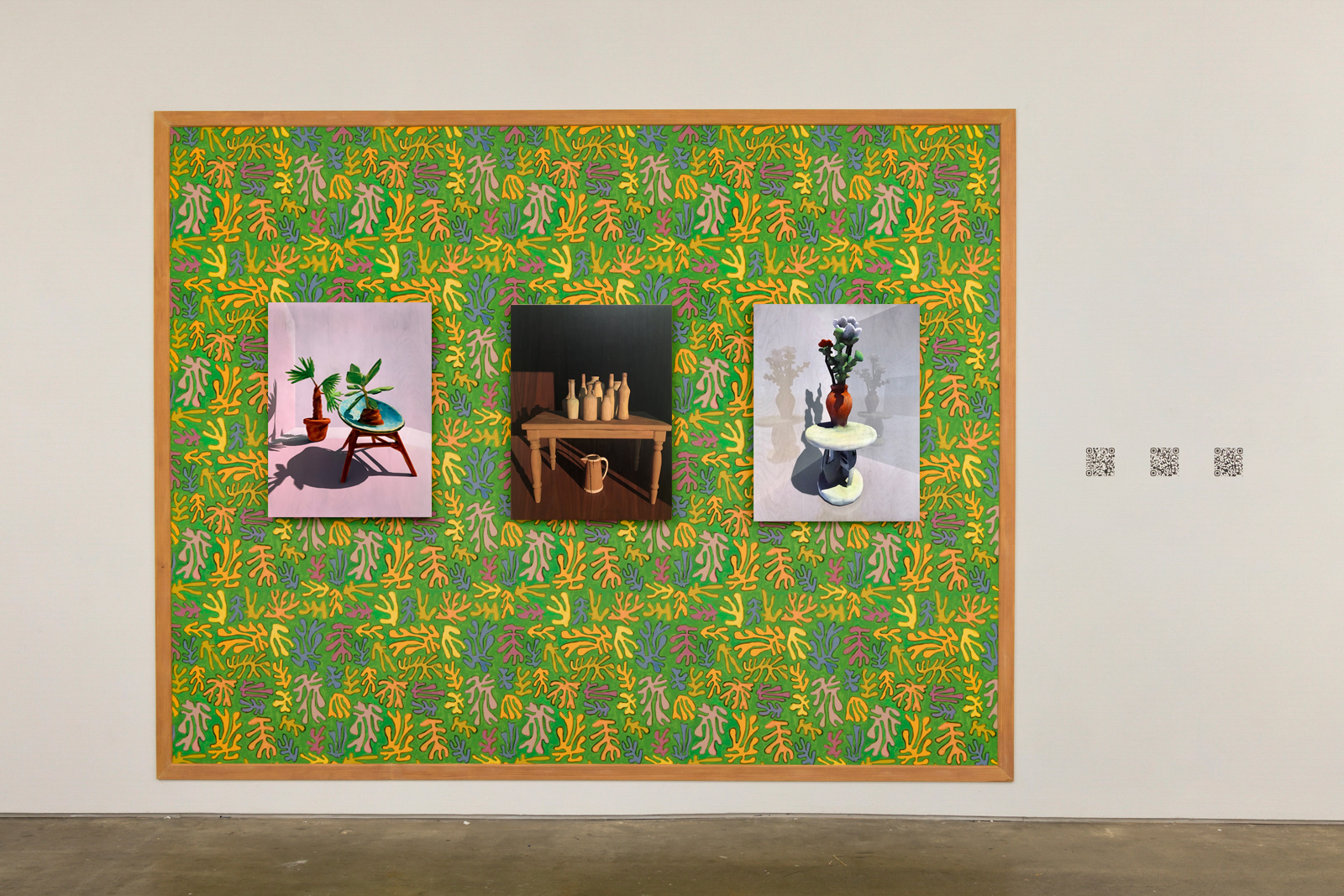
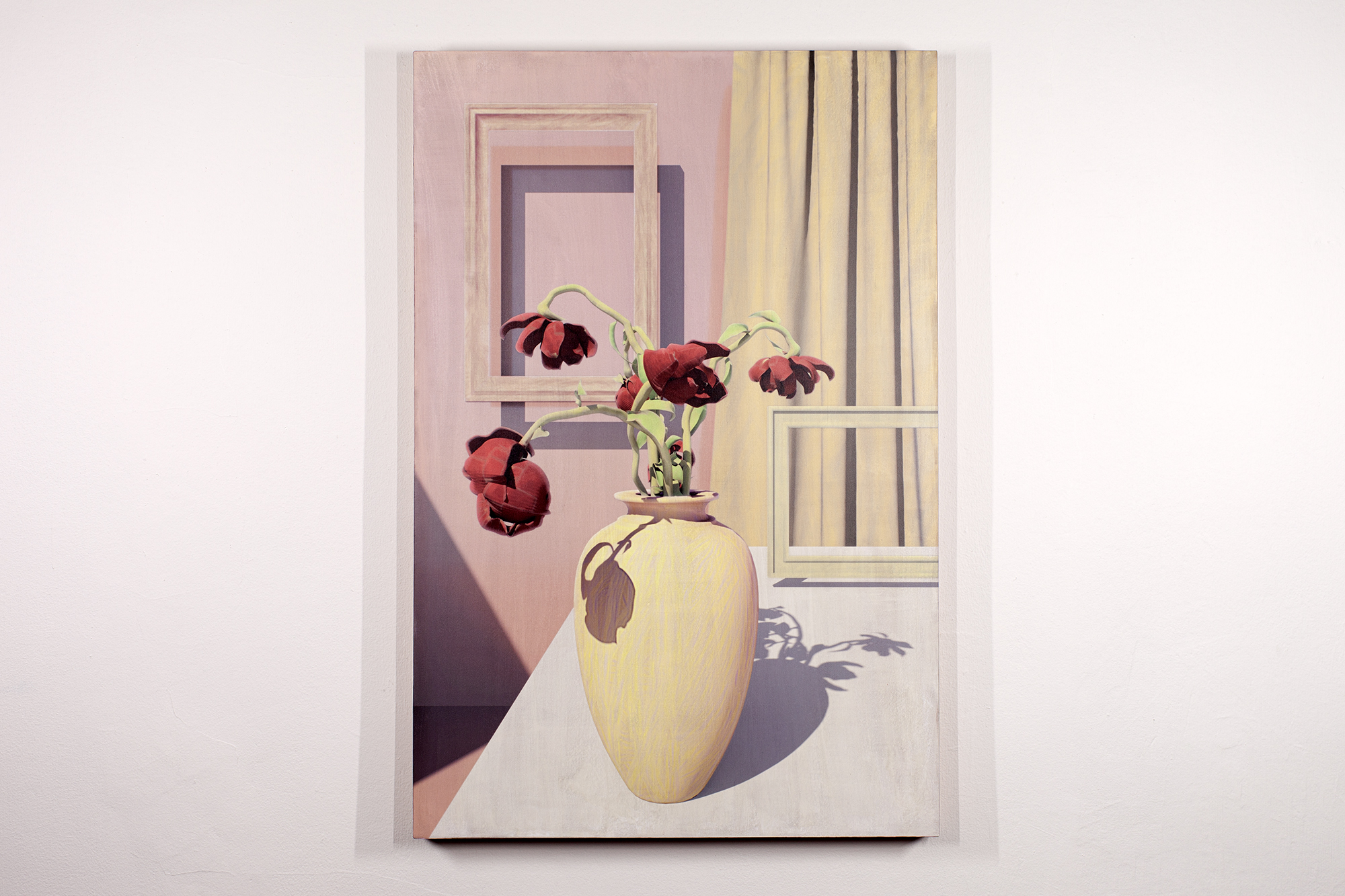


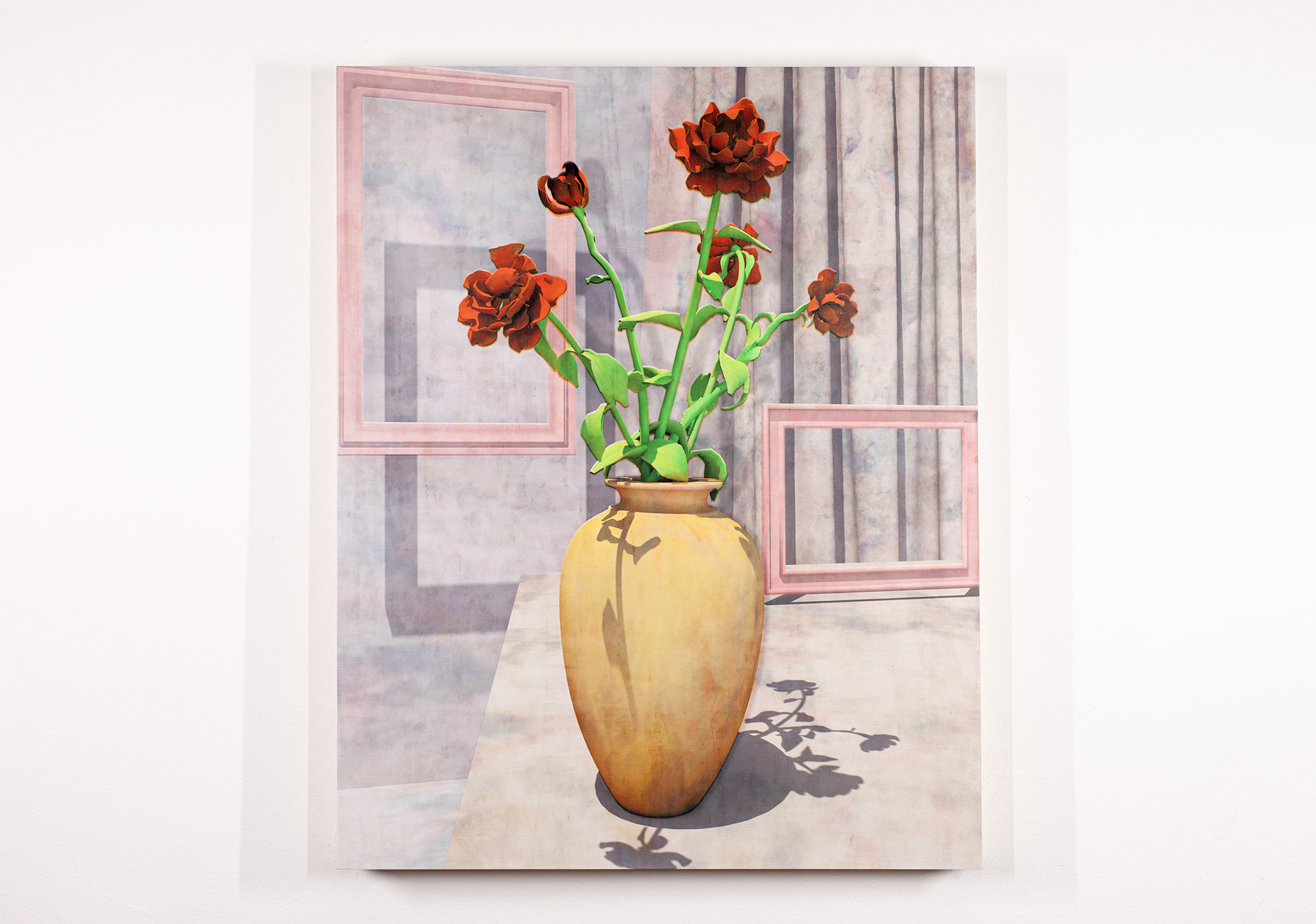

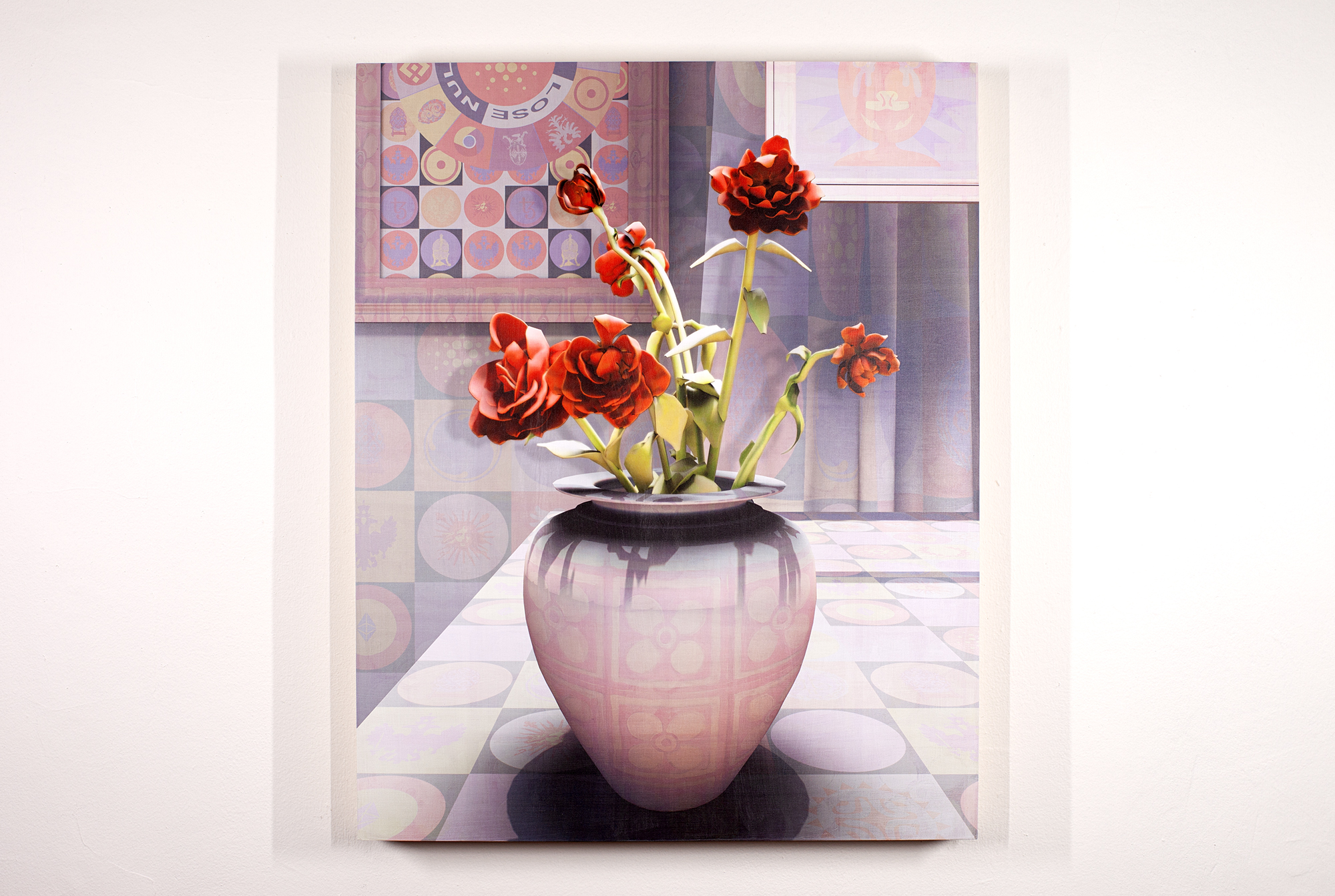
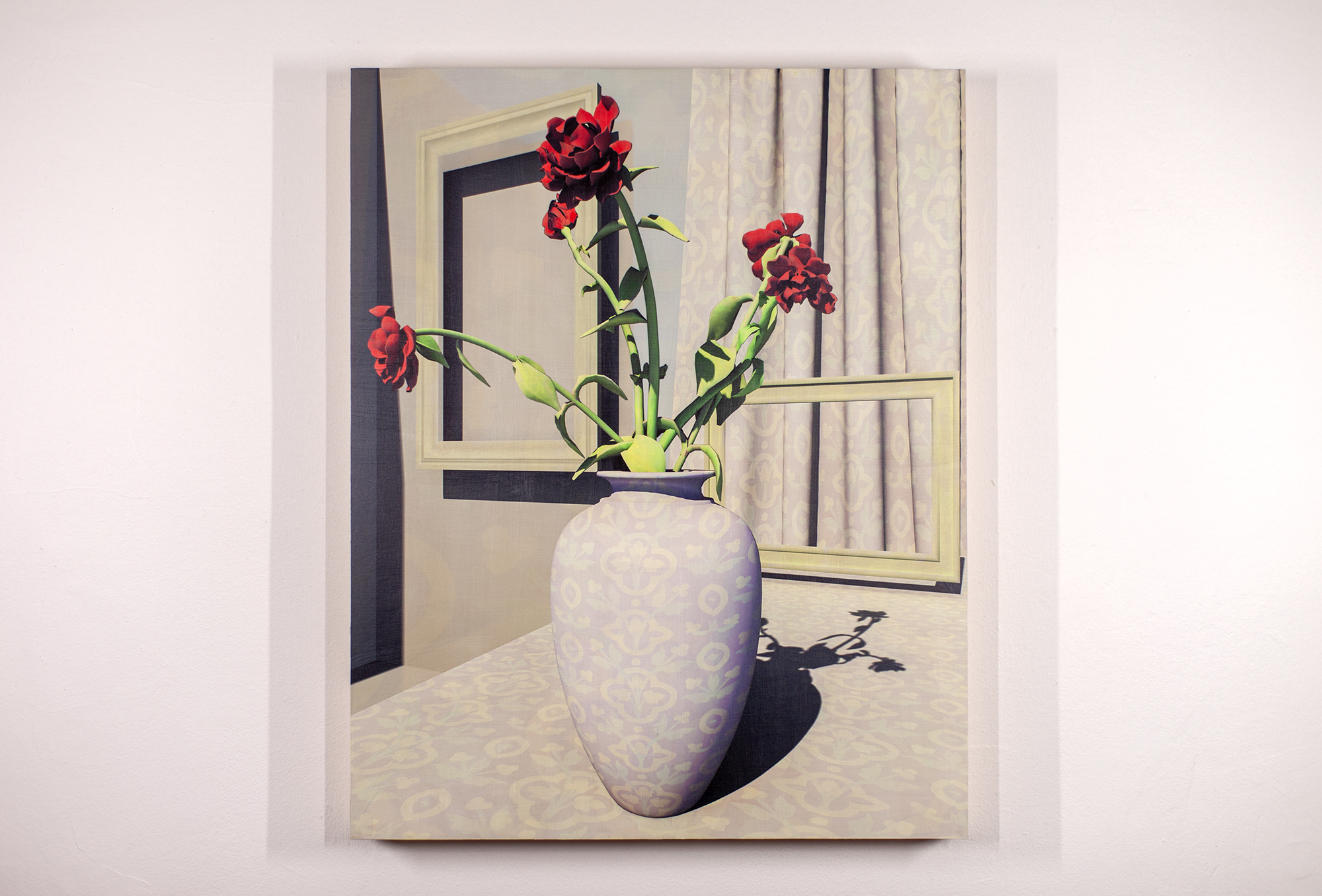
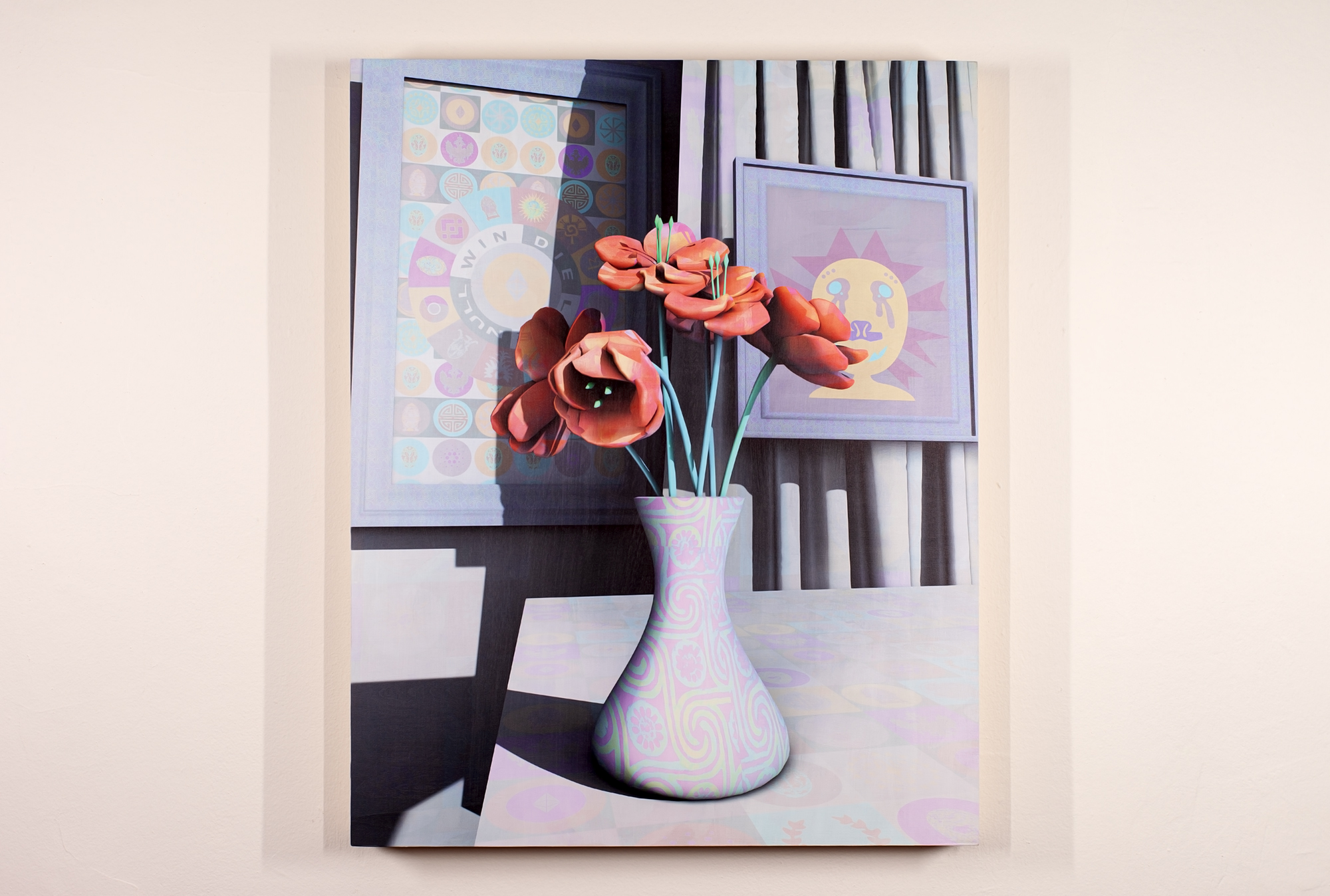
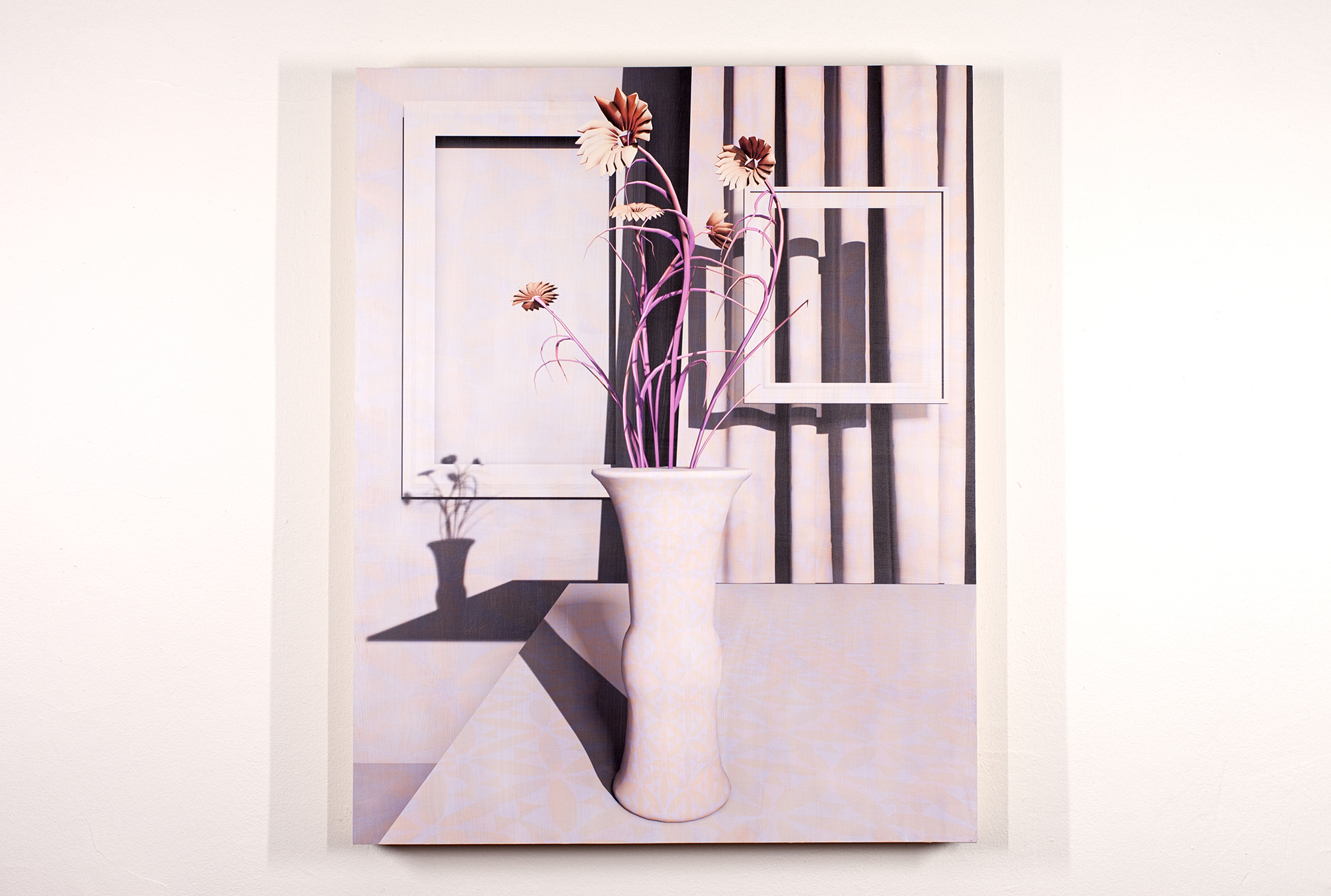




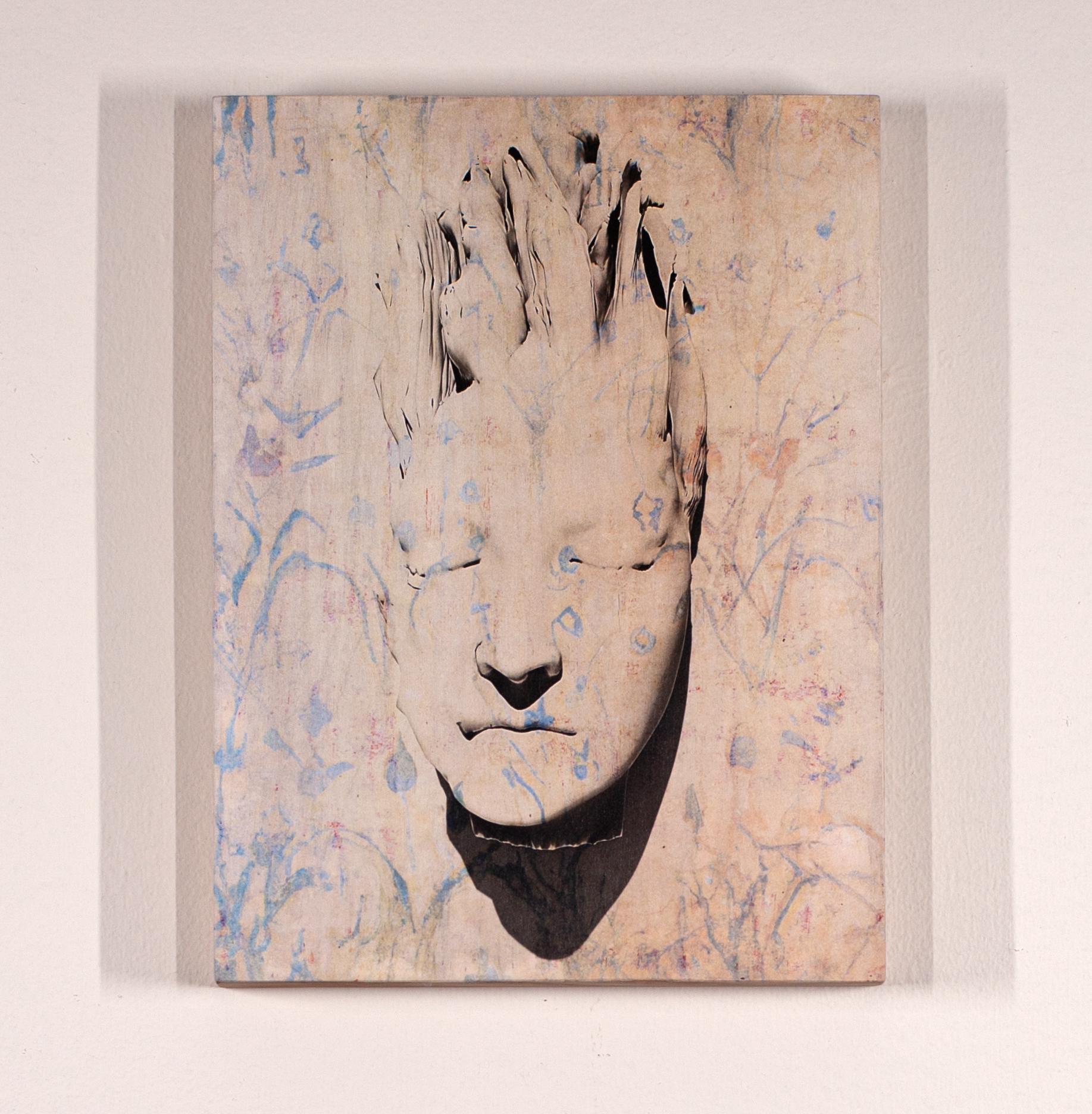

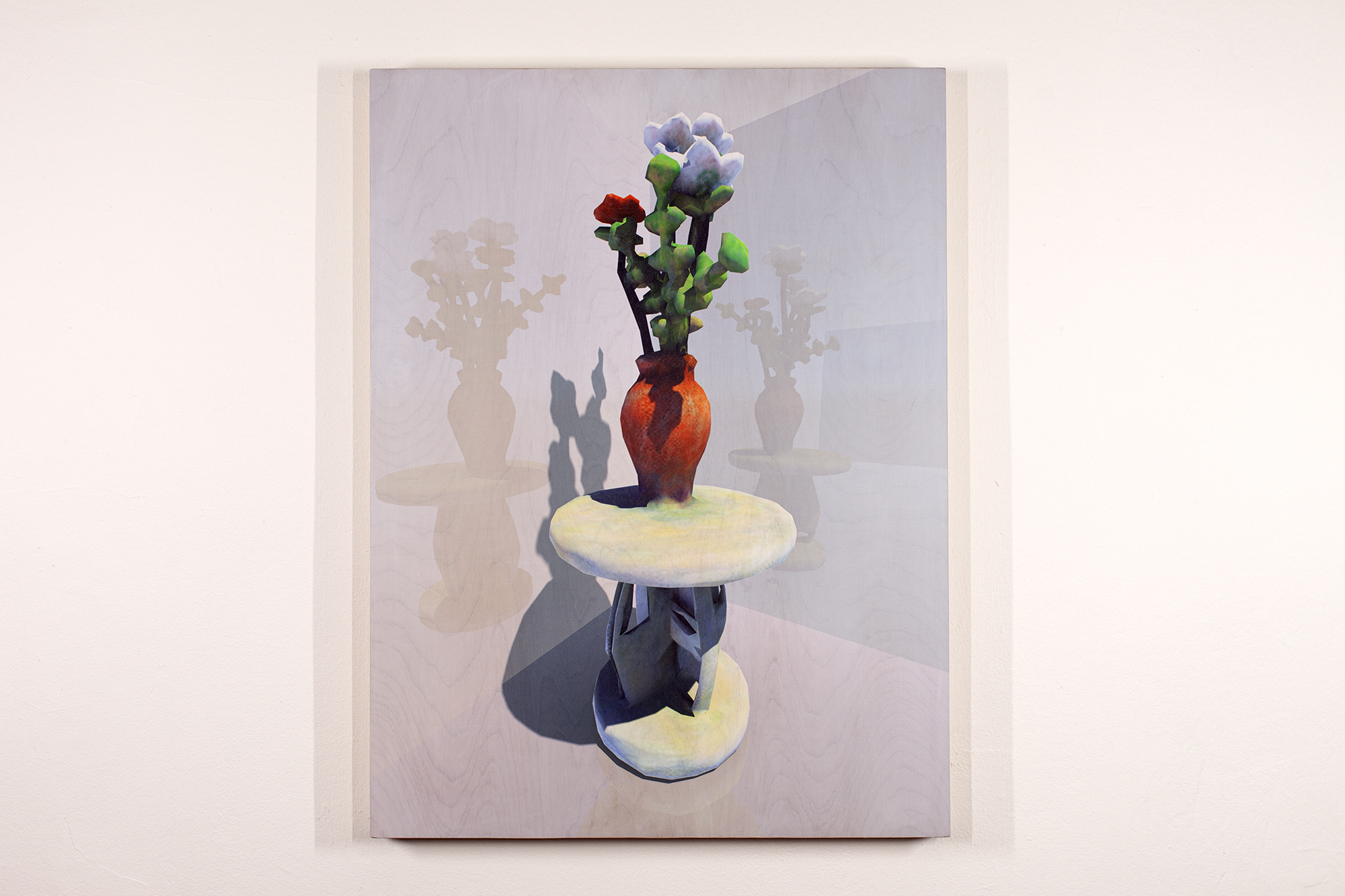
Painting After Digital After Photography
Paintings, Augmented Ceramics and Wallpaper
By Claudia Hart
This project reflects the chaos of our current moment, one that is in every way reflecting the paradigm shift we are also experiencing in the world of art and pictures. We are currently transforming from photographic paradigm to another related but very different concept, that of the virtual. Photographic capture is physical. Photographs are actually an imprint of light, focused by a lens, on a chemically treated film, re-transferred onto chemically treated paper to create a kind of fossil of something that happened in the tangible world. It started in the 19th and then mutated in the 20th-century to its most contemporary version of painting. Virtual imaging simulates reality rather than inscribing it. The virtual eschews physical processes that rely on physical things (like chemicals!). It is instead based on ephemeral, conceptual models and is mathematical. Post-photographic painting sits on hundreds of years of accumulated data, deploying the history of human scientific knowledge to make mathematical algorithms that model the natural world by using data and mathematics.

The science of modeling the natural world is called simulation technologies. Scientific information that we have collected over time concerning phenomenal experience is used to build a visual that resembles an architectural model as seen through the lens of a digital camera. Simulations-technologies numerically calculate the impact of physical forces such as gravity or wind, the mathematics of light, gasses and lenses, and the measured and enumerated properties of real materials such as oak or granite. These calculations are tabulated by some of the most complicated software ever made. They are then visualized in representational form in a mathematical Cartesian space, in the same way that scientists and engineers visualize the impact of disease on the body, or stress on a bridge, or the workings of subatomic particles, or the outcome of nuclear war. These visualizations are viewed by computer operators in schematic, architectural form “inside” of their computers, meaning through a software interface, or “window.” Such 3D software then also simulates a mathematical, digital model of a camera with an interface almost identical to that of a tangible digital camera, in turn derived from a traditional mechanical, analog camera. Instead of capturing the real in an indexical fashion like a photograph, Post Photography artists use measured calculations to simulate computer-generated models of the real.

Simulations-software is profoundly philosophical. It is epistemological, its graphical design reflecting the canons of scientific knowledge. This type of epistemological software stands on centuries of theoretical and scientific models of the real, and reflects the foundations of Western knowledge. The issues implied by it are made manifest at our own historical juncture where the culture of science and climate-change deniers along with every other version of a fact. now rule America. The manufacturing of fake truth in the form of misinformation and ubiquitous infotainment on social media are obviously epic.
At the core of this booth are six paintings by Claudia Hart, a pioneer of virtual art for the past thirty years, along with augmented reality ceramics and wallpaper
Claudia Hart makes paintings hover in a space
between the natural and unnatural worlds.
Her process is a kind of dance between the hand-made and the
computer-assisted, between organic materials and simulated ones. Her images
begin hand painted with a small brush. Hart then builds on those paintings, re-photographing
them and then adding them to architectural models that she skillfully
constructs in a computer game space, then paints free-hand on a tablet, finally
using a computer-assisted air brush to layer pure pigment on fine-grained wood
panels that she has painted, repainted and stained. These processes come
together to create a liminal object. Hart has discovered a new way to paint,
creating a work of uncanny beauty.
